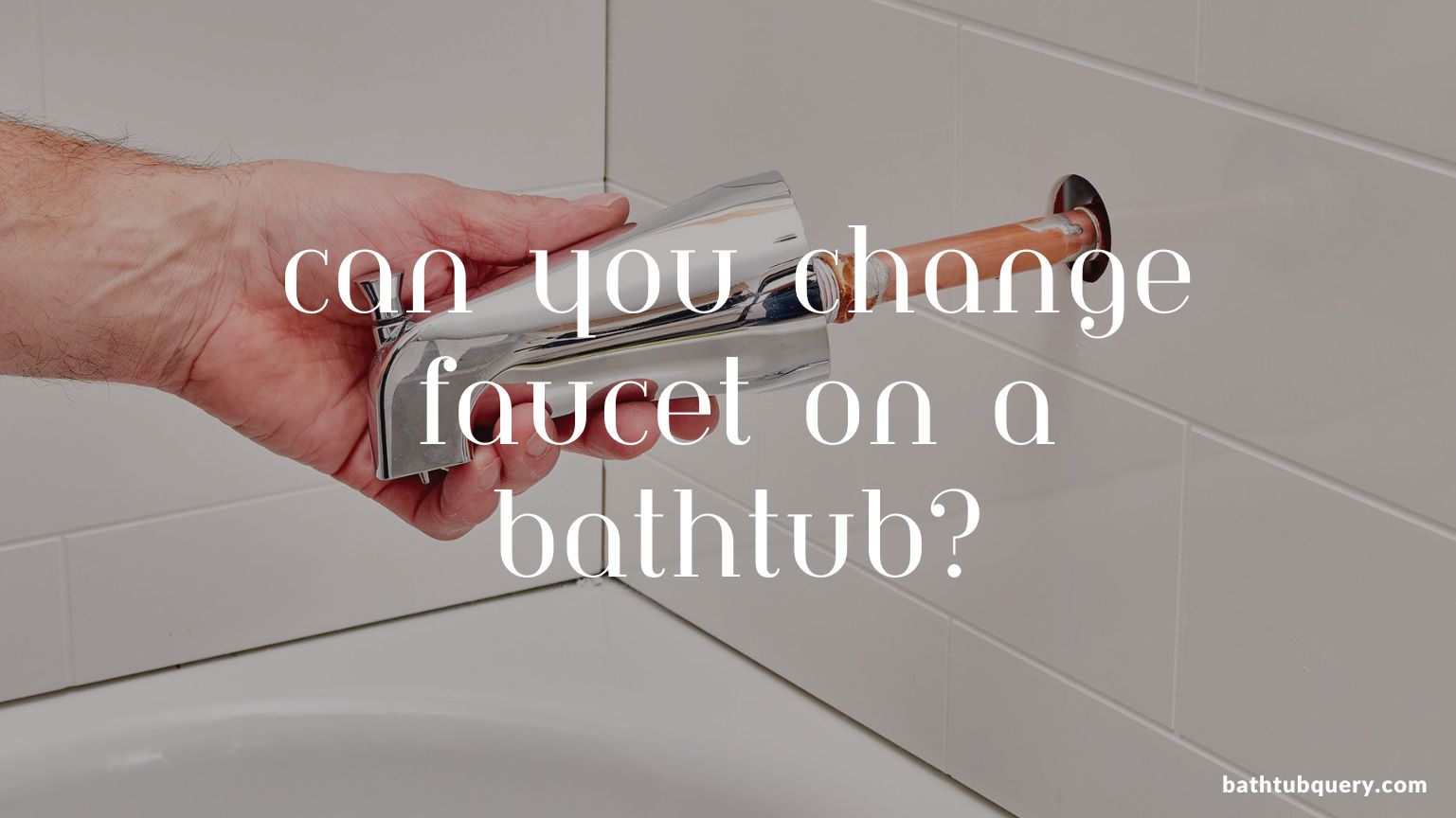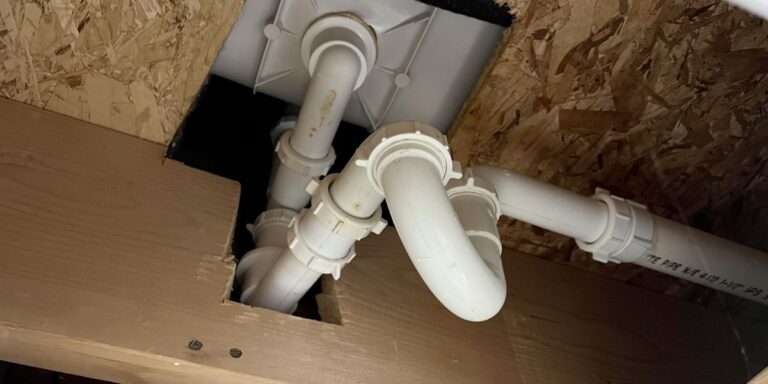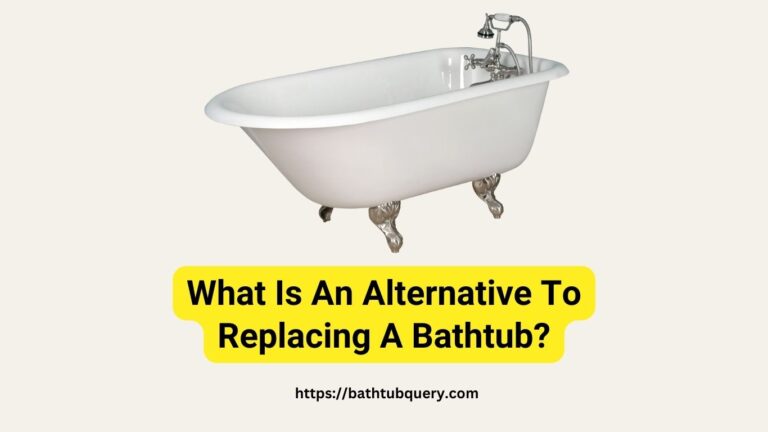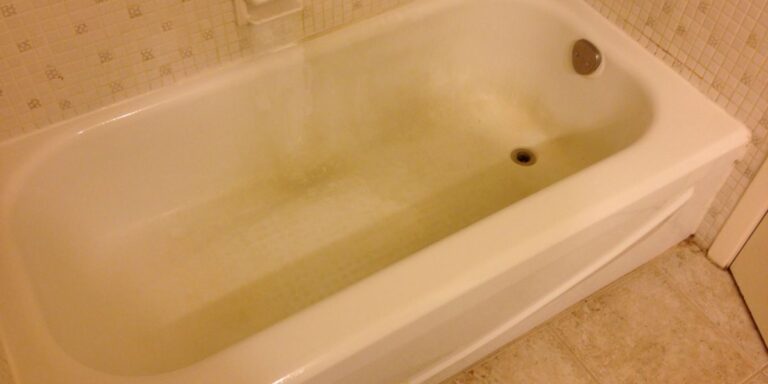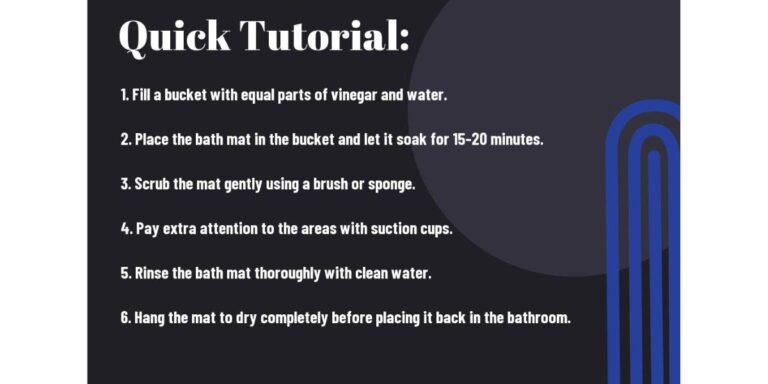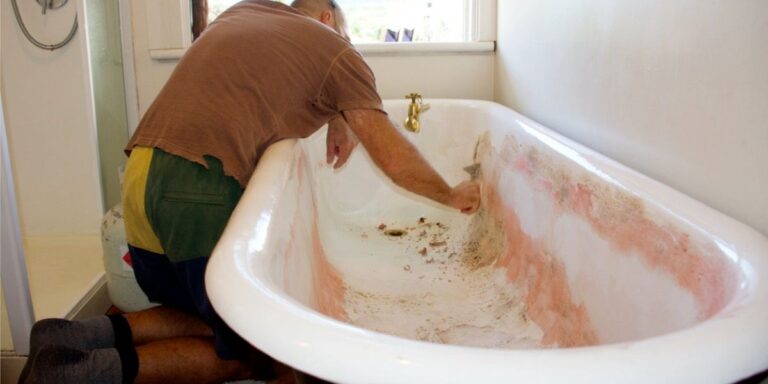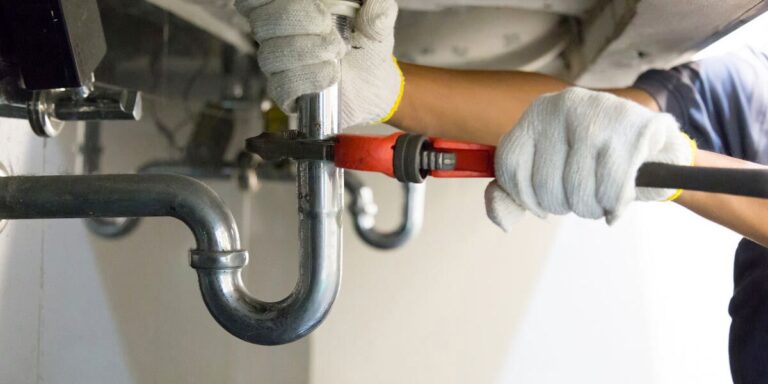Can You Change the Faucet on a Bathtub?
If you’re looking to update the look and feel of your bathroom, one of the easiest upgrades you can make is to replace the faucet on your bathtub. Swapping out an old, leaky faucet for a new model can make a huge visual difference and help improve the functionality of your tub. The good news is that this is a manageable DIY project for many homeowners with some basic mechanical skills.
In this article, we’ll walk you through everything you need to know to successfully change out a bathtub faucet on your own. We’ll cover when you may want to upgrade your faucet, what to look for when selecting a new one, steps for removing your old faucet and installing a new one, and tips for avoiding problems. Let’s dive in!
Can You Change the Faucet on a Bathtub?
Yes, you can change the faucet on a bathtub yourself. The process involves removing the old faucet handles and stems and then installing the new faucet. Make sure to turn off the water supply lines before starting, otherwise, the water will start dripping from the faucet. With some basic DIY skills and plumbing tools, changing out an old or broken tub faucet is a straightforward project you can tackle yourself.
You may be interested in; Can I Use a Kitchen Faucet for Bathtub? A Practical Guide
When do you Want to Change Your Bathtub Faucet?
There are a few common reasons you may decide it’s time to replace your tub’s faucet:
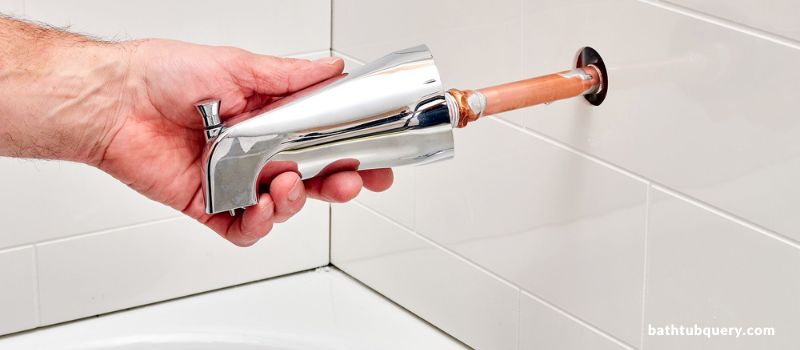
Updating the Style
One of the top motivators for changing a bathtub faucet is simply to update the style. Over years of use, faucets can start to look dated. Replacing your faucet with a more modern style can make your bathroom feel brand new.
Popular style trends right now include minimalist, geometric shapes for a contemporary vibe. Or go for an ornate, vintage look with clear acrylic knobs and cross handles if you want a traditional feel. The options are endless, so changing the faucet is an easy way to match the latest trends.
Fixing Leaks
If you notice your faucet is leaking, it likely means parts are worn out. Sometimes you can fix leaks by replacing rubber washers or O-rings, but often the damage is extensive enough that the entire faucet needs replacement. Dealing with a leak quickly is important to prevent mold or water damage. Replacing the faucet solves the problem at the source.
Improving Flow
Older bathtub faucets often have a flow rate of 2.5 gallons per minute (GPM) or more. Newer models are required to be 1.5 GPM or less. Switching to a lower-flow faucet conserves water and can reduce your bills. Low flow faucets still have enough pressure for comfortable bathing and look sleek too.
Choosing a New Bathtub Faucet
Once you decide to tackle a bathtub faucet replacement, your first step is picking out the new fixture. Here are key factors to consider:
Style
As mentioned earlier, the style you select can totally change the vibe of your bathroom. Go for a classic polished chrome look or perhaps something more unusual like black, bronze, or brushed nickel. Match the finish on your faucet handles to other fixtures in the room.
Also think about the visual style and shapes that appeal to you. Do you want something sleek and minimalist or quirky and retro? Look for a style that suits your tastes.
Quality
You don’t want to have to replace your brand new faucet in just a few years. Seek out high-quality models from reputable manufacturers like Kohler, Moen, American Standard or Delta Bathtub Faucets. Check reviews to ensure the faucet doesn’t have widespread complaints about leaks or other flaws. Paying a little more upfront is worthwhile.
A related guide about: Are Bathtub Faucets Universal?
Ease of Installation
Some faucets are designed to make DIY installation simpler, like those with supply lines that connect via quick connect couplers rather than nuts and washers. If you’re new to plumbing, look for an easy-install model. We’ll go over more faucet replacement tips coming up.
Flow Rate
To conserve water, look for an EPA WaterSense certified low flow faucet. These are required to have a flow below 1.5 GPM. You’ll still get solid water pressure, just use less water.
Budget
Bathtub faucets can range from about $80 on the low end to $500+ for high-end designer models. Set a reasonable budget based on your needs and stick to faucets in your price range.
Once you select the ideal faucet for your tub, it’s time to tackle the installation. Check out the below option.
Getting Ready for Installation
Replacing a bathtub faucet requires some advance preparation to ensure things go smoothly. Follow these tips before starting:
Gather Supplies
You’ll need some basic tools and materials:
- Adjustable wrenches
- Basin wrench for tight spaces
- Plumber’s putty
- Pipe tape
- New supply lines
- Teflon tape
- Flashlight
- Cloth rags
- Bucket
Make sure you have everything on hand before turning off the water and removing the old faucet.
Shut Off Water Supply Lines
Locate the shut-off valves for the hot and cold water lines under or near your tub and turn them clockwise to shut off the water. Turn on the tub faucet briefly to release pressure. Disconnect and drain the supply lines.
Read the installation instructions.
Each faucet comes with specific installation instructions. Read them thoroughly so you understand each step before you begin. Make sure to follow the directions closely during installation.
Clear the Sink Area
Remove everything from under the sink or tub area so you have ample room to work. Lay down towels or drop cloths to catch drips or spills. Having an uncluttered workspace makes a big difference for this project.
Okay, the prep work is done, and you’re ready to remove the old faucet!
Removing the Old Bathtub Faucet
Start by taking apart your existing faucet assembly piece by piece:
Remove Faucet Handle
Use a screwdriver to detach the handle. You may need to pry off a decorative cap first to access the screw. Place parts in a bag to keep track of them.
Detach Spout
Unscrew the retaining nut holding the spout in place. You may need a basin wrench for leverage. Pull out the spout.
Remove Valve Stems
Use adjustable pliers or a wrench to take out the hot and cold valve stems. Take note of which is hot vs. cold. Remove any remaining parts attached to the tub such as escutcheon plates.
Clean Away Old Putty
Scrape off any remaining putty residue with a putty knife. Wipe the area clean with a damp rag.
With all the old faucet pieces removed, the tub area is now prepped and ready for the new faucet.
Installing the New Faucet
It’s time for the fun part – installing your beautiful new bathtub faucet! Follow these key steps:
Prepare Supply Lines
Attach the flexible supply lines to the new faucet, making sure hot lines up with hot side and cold with cold. Use Teflon tape on threads to prevent leaks.
Position Faucet
Set the new faucet into place on the tub. Ensure the base is centered and sits flat. Outline the base with plumber’s putty.
Secure Faucet
Place the gasket and mounting bracket below the tub if included. Reattach supply lines. Hand tighten couplings, then finish tightening with wrench. Don’t overtighten.
Attach Spout
If the spout is a separate piece from the valves, slide it into place and secure with retaining nut. Ensure it’s aligned properly.
Install Valve Stems and Handles
Insert new valve stems into hot and cold ports, making sure rubber seats fit properly. Thread on handles and bonnet nuts. Attach index button or cap if included.
Make Final Connections
Connect supply lines to shut-off valves. Turn on hot and cold water and check for leaks during operation. Tighten any leaky connections.
Seal with Putty
Once all connections are secure, seal around the new faucet with plumber’s putty to prevent water getting under tub. Wipe away any excess smoothly.
Be sure to test the new faucet for leaks and proper flow. Once that’s done, you can handle some finishing touches.
Completing the Project
To complete your bathtub faucet replacement, just a few small tasks remain:
Remove Debris
Carefully remove any putty or other debris left over from the installation process. Wipe down the exterior of the new faucet with a clean damp cloth to remove dust.
Re-caulk if Needed
If any of the existing caulk around the tub is damaged, you may want to re-caulk those areas smoothly for a finished look. Let dry completely.
Check Water Pressure
Test the hot and cold water pressure and adjust if needed. Ensure ample flow for comfortable bathing. Turn faucet on and off several times and check below for drips.
Flush the Lines
Finally, turn on the hot and cold taps and let the water run for a minute or two to flush out any sediment in the lines. The initial flow may look discolored – this is normal.
With that, your new bathtub faucet makeover is complete! Take a moment to appreciate how a simple upgrade like this can make your bathroom feel brand new.
FAQs About Replacing Bathtub Faucets
Can bathtub faucets be replaced?
Yes, bathtub faucets can be replaced. You would turn off the water supply, remove the old faucet, install the new faucet, and turn the water back on to test for leaks. The process is straightforward for most homeowners.
Can you change bathtub faucet without changing the valve?
Typically, no. The valve controls the water flow and mixing, so replacing the faucet without replacing the valve could cause water pressure and temperature issues. For a proper faucet replacement, the valve should be swapped out too.
How do you replace a bathtub faucet fixture?
Replacing a tub faucet fixture involves shutting off the water, removing the old faucet, cleaning the tub surface, applying plumber’s putty, inserting the new faucet, connecting the water supply lines, and testing for leaks before finishing the install. Most homeowners can handle this faucet replacement project themselves.
Can I remove tub faucet?
Yes, you can absolutely remove an old or faulty tub faucet. The process involves turning off the water supply, detaching the faucet, capping the supply lines, cleaning tub surface thoroughly, then installing the new faucet fixture and testing for proper operation.
In Summary
Replacing an outdated or leaky bathtub faucet with a new model is one of the easiest ways to give your bathroom an updated look. Doing the installation yourself allows you to save on plumber fees and customize the new fixture to your style.
To recap the key steps:
- Pick a faucet that matches your bathroom decor and fits your budget
- Turn off water lines and prep your workspace in advance
- Completely remove the old faucet, cleaning away residue
- Carefully install the new faucet, ensuring proper sealing
- Connect supply lines, test for leaks and enjoy your upgrade!
While swapping a bathtub faucet takes a bit of time and elbow grease, the sense of accomplishment and updated ambiance you’ll gain make it a very worthwhile DIY project.

William J. Bullock is a licensed plumber with over 15 years of experience installing and repairing bathtubs. He runs his own plumbing company in Greenville and serves residential and commercial clients. William is dedicated to providing honest, transparent advice to help homeowners make informed decisions about their bathroom renovations.
He has established expertise in selecting bathtubs, planning custom installations, diagnosing issues, and completing repairs. William aims to share practical tips and reliable recommendations based on extensive hands-on work. When he isn’t on a job site, William enjoys spending time with his family and volunteering at local community events. He takes pride in delivering quality service and enjoys helping people upgrade their homes.

